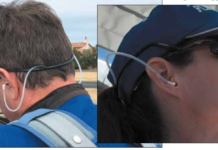Avgas Wimps
Now I know that in these days of “the market is king” to even ask such a question is heresy, but the bottom line is simply this: After 30 years since lead was outlawed for every other commercial purpose, 100LL lives on simply because the market hasnt found a low-cost way to end its use and because 100LL is such a niche product that its below the regulatory radar screen.
If I remember correctly, unleaded autogas was also more expensive when it was first introduced. People grumbled, but they got over it. Have you heard anyone saying we should go back to leaded fuel as a way to reduce the cost of driving?
Im grumbling now because 100LL at my local FBO is $5.75. So much for market forces, at a time when the average price nationwide hovers around $4. The FBO manager tells me the company has a business plan. Oh, that explains it!
Heres what we need to do. Right now the issue du jour in Washington is user fees and a dastardly plot by the airlines to snatch aviation policymaking away from Congress by outsourcing ATC, with GA footing the bill. So lets agree to increase the fuel tax on leaded avgas by 25 cents a gallon, rising by 25 cents each year.
Unleaded avgas will continue to be taxed at the current rate and Congress should simultaneously write a prohibition against user fees for GA into law. Part of the tax increase would be used to pay for the FAAs ongoing fuel research program.
Now I know conservatives will howl about new taxes and government selecting the winners instead of the market. So we’ll let the market select the winners. Since the tax only applies to leaded fuel, then a number of alternatives will increasingly benefit as the tax on leaded fuel increases: aero-diesels burning Jet-A, turboprop engines for GA, 91/96 unleaded avgas, AGE-85, PowerLink, PRISM and so forth. Let the market decide what the best mix of these alternatives should be, but 100LL will be priced out of existence as a matter of consistent environmental and public health policy. EDB will also go away.
The oil industry will naturally want to know whos going to pay for the necessary infrastructure/production/transportation changes needed to support the end of 100LL and the new unleaded fuel environment. The answer is that they will. They should be grateful that the phaseout will give them time to end the use of TEL/EDB without any liability penalty.
Ask the lead paint or asbestos manufacturers if theyre happy about the potential lawsuits still swirling about them years after they quit selling the product. The oil industry is awash in cash right now and can afford to transition away from 100LL, especially if theyre freed from any liability burden for the past.
I think its wimpy to say that the “market wont let us change.” This country desperately needs to rediscover the can-do values that won World War II. Im embarrassed to still be burning leaded avgas. We can and should end the production of 100LL.
Jim Grant
Via e-mail
———-
EFB Feedback
Your article in the December 2005 issue about electronic flight bags contains incorrect factual information about Paperless Cockpit, which I wanted to correct and clarify.The article does a great job presenting all EFB options in the market, describing the players as we’ll as the systems. There are very good and insightful points on the differences between the hardware being offered for EFB use and COTS (off-the-shelf commercial systems) one can buy from Best Buy or CompUSA.
The author correctly identifies display technology and ergonomics of the units as the two primary points of divergence. Great advice can also be found in the article, guiding consumers (primarily private pilots) through the available EFB options. Yet, the article has several factual details that are not correct or inaccurate and would impact the market in a way that may give a wrong overall picture of the EFB industry and its participants.
The article states that “few companies build the entire EFB.” While this is not incorrect, I wanted to point out that Paperless Cockpit has both third-party re-purposed hardware that it adapts to aviation needs with great diligence as we’ll as building our own products, such as E-Board C3 display, for example.
The article correctly generalizes that “one item conspicuously missing from most EFBs is a keyboard.” Most EFBs do not offer a physical keyboard, yet the article fails to mention that Paperless Cockpits E-Board XP3 EFB contains both physical and software keyboards for customers to use while in flight or on the ground.
In coverage of Paperless Cockpit specifically, the article mentions that “most of their product line is focused on Part 135 and Part 121 Class 2 and Class 3 installations; their Class 1 EFB product is at the bottom of the product line.”
I would add that it is true that the majority of our customers use our FliteServ C2 EFB, a Class 2 product, but Part 91 operators are the core of our customer base. In the description of Paperless Cockpits E-Board XP3 EFB, its referred to as a tablet PC. While not incorrect, the system is a convertible notebook/pen tablet system, which is between “notebook” and “tablet” modes.
Julia Istomina
Paperless Cockpit
Memphis, Tennessee




